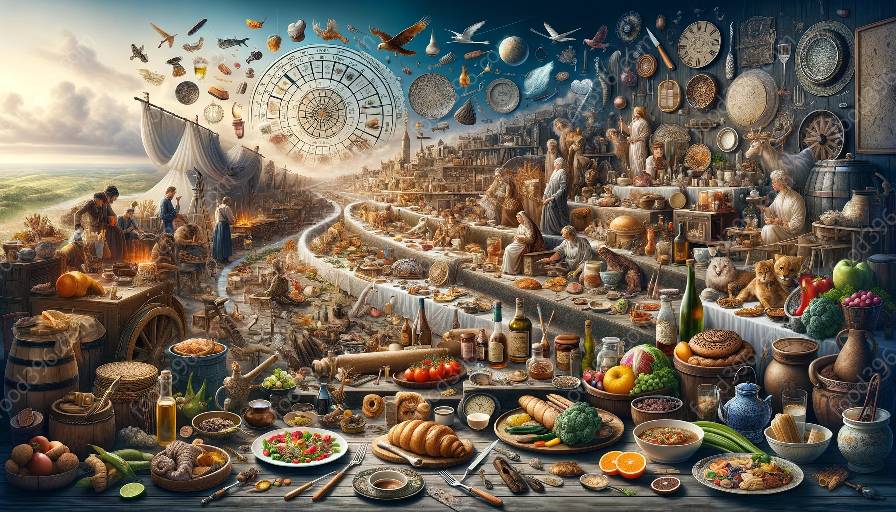Spanish cuisine is a vibrant tapestry of diverse regional flavors, ingredients, and cooking techniques, each showcasing a unique culinary identity shaped by centuries of history and cultural influences.
Exploring the regional variations in Spanish cuisine offers a fascinating journey through the different landscapes, climates, and traditions that have contributed to the rich tapestry of flavors that define this cherished culinary tradition. From the sun-drenched coasts of Andalusia to the lush green hills of the Basque Country, Spanish cuisine captivates the senses with its variety and depth.
Spanish Cuisine History
The history of Spanish cuisine is a reflection of the country's complex past, where influences from various cultures and regions have interwoven to create a unique gastronomic heritage. The rich culinary history dates back to ancient times, with each successive wave of conquerors and settlers leaving their mark on the country's cuisine.
Cuisine History
Delving into the history of cuisine at large provides insights into the global evolution of culinary traditions, the exchange of ingredients and cooking techniques between cultures, and the ways in which food has shaped human societies throughout history.
Regional Flavors
Andalusia: The southern region of Andalusia is known for its vibrant, flavorful cuisine, heavily influenced by its Mediterranean climate and proximity to the sea. The region's cuisine features an abundance of fresh seafood, olive oil, and vibrant spices, giving rise to dishes such as gazpacho, pescaíto frito, and salmorejo.
Catalonia: Situated in the northeast of Spain, Catalonia boasts a distinctive culinary identity characterized by its blend of Catalan, Spanish, and French influences. The region is renowned for its use of fresh seafood, artful preparation of vegetables, and the creation of iconic dishes such as paella, romesco sauce, and crema catalana.
Basque Country: The Basque Country, nestled in the north of Spain, is celebrated for its bold, earthy flavors and the Basque people's deep-rooted culinary traditions. The region is known for its pintxos (small, delectable bites), bacalao al pil-pil, and marmitako, all of which exemplify the robust, hearty flavors of Basque cuisine.
Valencia: Valencia, located on the eastern coast, is famed for its use of rice, which forms the foundation of the iconic dish, paella. The region's cuisine also features succulent oranges, fresh seafood, and a vibrant array of seasonal vegetables that add brightness and depth to its culinary offerings.
Key Ingredients
Spanish cuisine harnesses an array of key ingredients that are emblematic of the country's diverse culinary landscape. From saffron and olive oil to paprika and sherry vinegar, each ingredient contributes to the unique flavors and aromas that define Spanish dishes.
Olive Oil:
As one of the cornerstones of Spanish cuisine, olive oil is an essential ingredient that imparts a rich, fruity flavor and a silky texture to countless dishes. The unique climate and terrain of olive-producing regions in Spain result in an unparalleled diversity of olive oil varieties, each with its own distinct characteristics.
Paprika:
Paprika, or pimentón, is a fundamental spice in Spanish cooking, lending a deep, rich color and a smoky, slightly sweet flavor to dishes. The varying levels of spiciness in paprika, ranging from mild to hot, allow for diverse applications in Spanish cuisine.
Seafood:
Given Spain's extensive coastline, seafood plays a prominent role in the country's culinary tapestry. From succulent prawns and tender calamari to briny anchovies and plump mussels, Spanish cuisine celebrates the bounty of the sea in an array of delectable preparations.
Culinary Techniques
Spanish cuisine is defined by an array of unique culinary techniques that contribute to the distinctive flavors and textures of its dishes. From traditional methods of preserving food to the artful preparation of tapas, each technique showcases the skill and artistry of Spanish cooks.
Salt Cod Preservation:
The practice of salting and drying cod, known as bacalao, has been a traditional method of preserving fish in Spain for centuries. In addition to preserving the fish, this technique infuses the cod with a rich, savory flavor that forms the basis of iconic Spanish dishes such as bacalao al pil-pil.
Tapas Culture:
The concept of tapas, small savory dishes often served alongside drinks, is a cornerstone of Spanish culinary tradition. The artful preparation of tapas celebrates the diversity of flavors and ingredients present in Spanish cuisine, allowing diners to experience a wide array of tastes in a single meal.
Rice Cookery:
The meticulous preparation of rice is an integral part of Spanish cuisine, particularly in the iconic dish, paella. The technique of cooking rice to perfection, infusing it with flavorful stocks and aromatic spices, is a testament to the culinary prowess of Spanish cooks.
Culinary Heritage
The culinary heritage of Spanish cuisine is deeply rooted in the country's history, embodying a rich tapestry of traditions, ingredients, and flavors that have been passed down through generations. Spanish cuisine continues to evolve, embracing modern influences while maintaining a profound connection to the past.
Modern Innovations:
While honoring its deep-rooted traditions, Spanish cuisine also embraces modern innovations, with talented chefs and culinary creatives reimagining classic recipes and techniques. This fusion of tradition and innovation has propelled Spanish cuisine onto the global stage, earning acclaim for its creativity and artistry.
Cultural Significance:
The cultural significance of Spanish cuisine extends beyond the kitchen, shaping social gatherings, celebrations, and everyday rituals. The shared experience of savoring traditional dishes, such as tapas or paella, fosters a sense of community and connection, embodying the spirit of Spanish hospitality.
Exploring Spanish Cuisine
Spanish cuisine is a vibrant mosaic of regional flavors, historical influences, and culinary artistry that captivates the senses and invites exploration. Each region contributes its own unique character to the tapestry of Spanish cuisine, offering a rich and diverse culinary experience that reflects the country's cultural heritage and culinary ingenuity.

